Cow's tongue or chamois mushroom
2 years ago · Updated 6 months ago
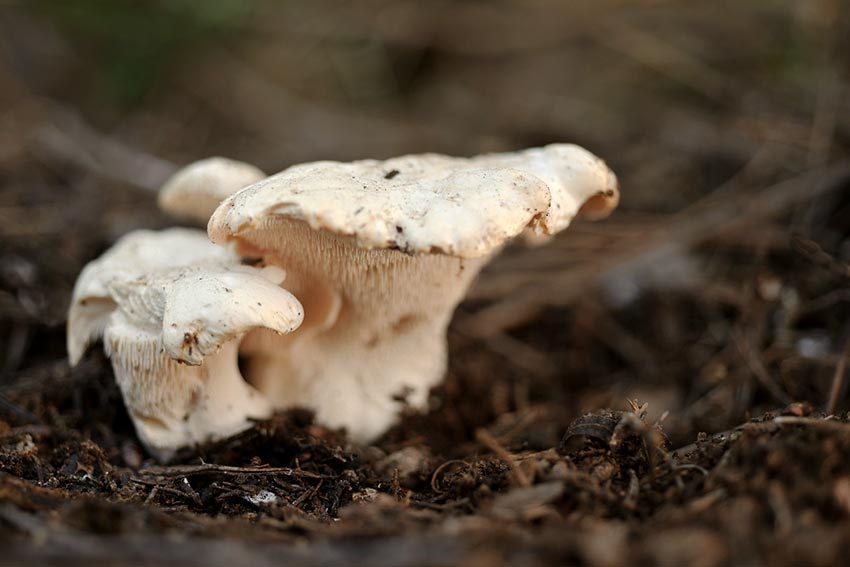
Cow tongue mushroom, hydnum repandum, llengua de bou or chamois, a delicious edible mushroom that is rarely harvested and is a real treat in the kitchen. We reveal all its secrets. Cow tongue mushrooms are delicate mushrooms that can be found in our mountains until the end of the cold season. Although they are not a highly prized mycological species, nor one of the most sought-after, they do have a certain reputation. This is not surprising. Its taste and the quantity of cow tongues that can be found if you locate a good chamois circle make this mushroom one of the surprises of the mountains in winter. This is greatly helped by the fact that cow tongues are easily confused with other toxic or poisonous mushrooms when we go to the mountains with our mushroom basket. There are very few species that have a hymenium like the Hydnum, with small spines that are very easy to distinguish. And few species are as tasty!
If you would like to learn more about the Hydnum genus, we recommend this guide to wild mushrooms This knife is the most suitable for picking cow's tongue mushrooms.
Table
- Names of the cow's tongue mushroom
- What do cow tongues look like?
- How can cow's foot mushrooms be distinguished from other species?
- Habitat of cow tongue mushrooms. Where can you find cow tongue mushrooms?
- Confusion between cow tongue mushrooms and other poisonous mushrooms
- Images of cow's tongue mushrooms, llengua de bou
- Cow's tongue mushrooms in the kitchen. Edibility
Names of the cow's tongue mushroom
The cow's tongue mushroom is known by many popular names. We have already mentioned that it is one of the most abundant species and, although it is not very well known, it has been eaten for a long time.
Cow's tongue, but a mushroom, not an animal
Although the scientific name for cow tongue is Hydnum repandum, its relatives Hydnum albidum and Hydnum rufescens are also called by the same name. These three species are known by the same popular name. This is due to the characteristic shape of their hymenium, which is composed of small spines that resemble a cow's tongue. However, the wide variety of names is not Latin but popular. Thus, this unusual mushroom is known in Spanish as gamuza, cow's tongue, sheep's foot, or cat's tongue. In Catalan, it is called lengua de bou or vaqueta, in Basque, zizauri, negu ziza, or tripaki argia, and in Galician, llingua de vaca. In Europe, it is called Pied de mouton, langue de chat (France), Wood Hedgehog (UK) or steccherino (Italy).
What do cow tongues look like?
Cow tongue mushrooms have very distinctive characteristics, mainly in their hymenium. This makes them easy to identify. But we will explain the main characteristics point by point. If you want to know what cow's tongue mushrooms look like, take note.
Cap
Between 4 and 15 cm in diameter, it is initially flat and convex in shape. Later, it spreads out irregularly or becomes globular. It is brittle; the edge often appears cracked and, when mature, it has a lobed shape. The cuticle is thick, difficult to separate, dull, dry, and creamy white in specimens found buried. In those that are not buried, the color is more yellowish, orange-cream.
Stem
The stem is short and thick, similar in color to the cap. Between 2 and 6 cm high and 1-3 cm in diameter, and mostly eccentric.
Hymenium
All species of Hydnum have a hymenium formed by spines or spines that, when touched, come off easily. The spines are very numerous, fragile, between 2 and 6 millimeters long, and pointed. They are paler in color than the cap and decurrent.
Flesh
Whitish in color, compact, dense, and brittle. It has no apparent odor and tastes somewhat bitter, especially in mature specimens.
How can cow's foot mushrooms be distinguished from other species?
The main characteristic of Hydnum is the hymenium. The underside of the cap of this species is formed by small, easily removable, tightly packed spines. This is a characteristic of the three types of cow's tongue mushrooms found in our region: Hydnum albidum, Hydnum rufescens and Hydnum repandum).
Another characteristic is their appearance time, well into winter. They are resistant to cold temperatures, even below 0ºC. For this reason, they coexist with a limited number of species, making them very easy to identify. They are mushrooms that are rarely attacked by insects. As only the spines on the cap need to be removed, cow's tongue mushrooms are very versatile in the kitchen. What's more, they are delicious! Another characteristic of cow's tongue mushrooms is their fragility; they break very easily. As they often grow half buried, we usually break the caps when harvesting them.
Habitat of cow tongue mushrooms. Where can you find cow tongue mushrooms?
Chamois, cat's tongue, or cow tongue mushrooms are mushrooms that grow in rows or fairy rings. Sometimes these rings are large, even several meters in diameter.
They appear in large groups, half buried and usually close together.
They like dense, leafy forests. Mainly under conifers (especially Hydnum albidum), although they also grow under deciduous trees (beech, oak, chestnut, etc.).
When can I find cow tongue?
This is an autumn mycological species, although it usually appears even in the middle of winter. It begins to appear in deciduous trees and later in pine forests, continuing to bloom when almost all autumn species have already stopped flowering. It is very resistant to cold, so we should look for it from October to December or January, under dead leaves and pine needles, with only part of its bright cap visible.
Confusion between cow tongue mushrooms and other poisonous mushrooms
We have already mentioned that this is a very easy mushroom to identify and that it can only be confused with other species of Hydnum, all of which are edible.
Types of milk cap mushrooms. Characteristics and differences
The different species of milk cap mushrooms that we may encounter in our forests are as follows:
Hydnum albidum
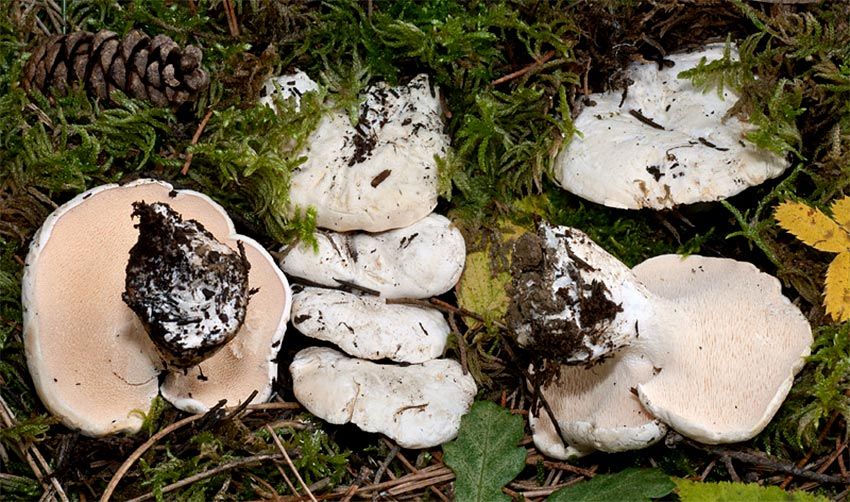
It likes white pine, Aleppo pine, or Pinus halepensis. It is typically Mediterranean, and of the three species of cow's tongue mushrooms, it is considered to be the highest quality for eating. It sprouts under the needles of Pinus halepensis mixed with dwarf oak or kermes oak. Its main characteristic is the pure white color of the entire mushroom, from the stem to the cap. The pure white color stands out against the vegetation and makes searching for this mushroom very enjoyable.
Hydnum repandum
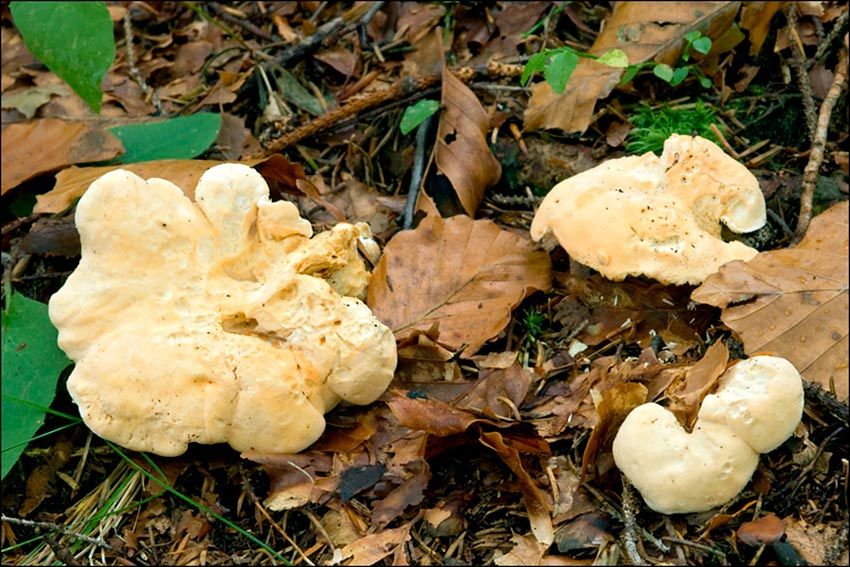
We are talking about a cow tongue mushroom that prefers oak and beech forests. It is cream-yellow in color. Its taste is slightly more bitter than that of its relatives, especially in mature specimens.
Hydnum rufescens
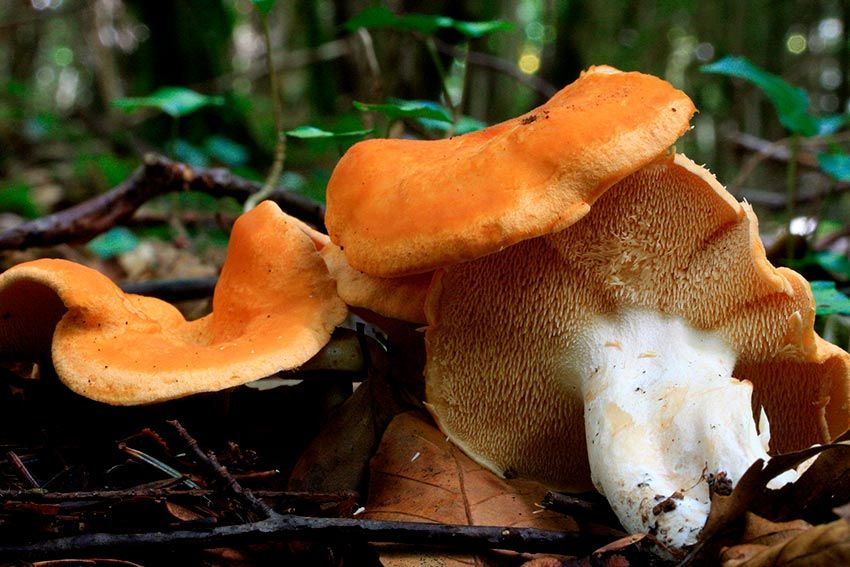
It is called cat's tongue and is the smallest of the three species. Its distinctive bright orange color is very characteristic. We often find all three species of cow's tongue mushrooms in the same habitat. The stem of this species is thin and its center is denser.
Images of cow's tongue mushrooms, llengua de bou
Finding and photographing cow's tongue mushrooms or chamois is extremely fun. These specimens stand out from the substrate and vegetation where they grow. We can find beautiful photos of Hydnum. We leave you with a selection of the best
Cow's tongue mushrooms in the kitchen. Edibility
This variety is a real unknown. It is rarely used in cooking and not highly sought after, so those of us who look for it and harvest it are lucky. This edible mushroom combines perfectly with a multitude of flavors and cooking methods (sautéed, grilled, stewed, etc.). It should be noted that if the spines are not removed, they can cause slight bitterness. The same is true for overdeveloped specimens. It should also be consumed in moderation, like most mushrooms. May cause discomfort. Apart from these two caveats, it is a very rewarding mushroom. These mushrooms have little odor but an intense mushroom flavor that is enhanced when cooked on the grill. When cooked, their flesh turns yellow.
Nutritional information for cow tongue mushrooms (100 g)
- Energy 31.0 kcal
- Protein 1.8 g
- Carbohydrates 4.0 g
- Fiber 2.5 g
- Fat 0.3 g
- Cholesterol 0.0 mg
- Monounsaturated fatty acids 0.0 g
- Saturated fatty acids 0.07 g
- Polyunsaturated fatty acids 0.17 g
- Folic acid 23.0 ug
- Iron 1.0 mg
- Calcium 9.0 mg
- Zinc 0.1 mg
- Vitamin C 4.0 g
- Vitamin A 0.0 ug
- Sugars 4.0 g
- Salt (sodium) 5.0 mg
Health and cow tongues!

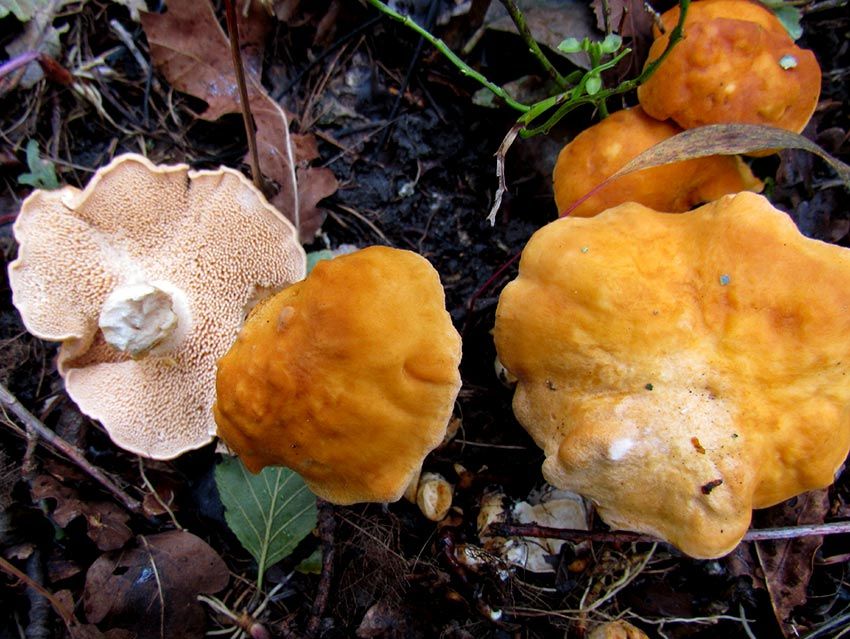
Te pueden interesar